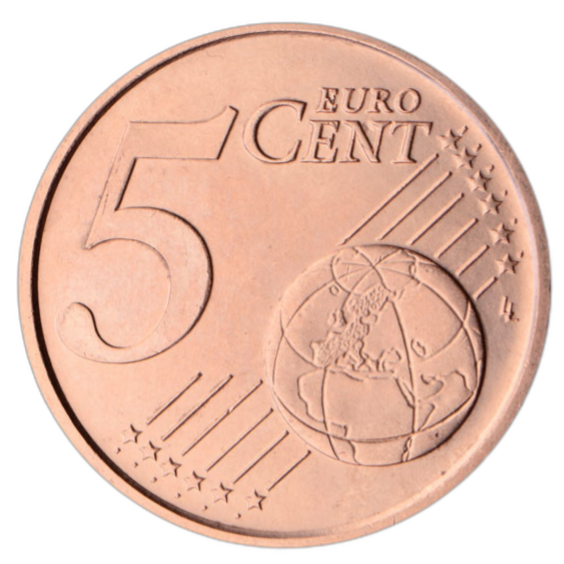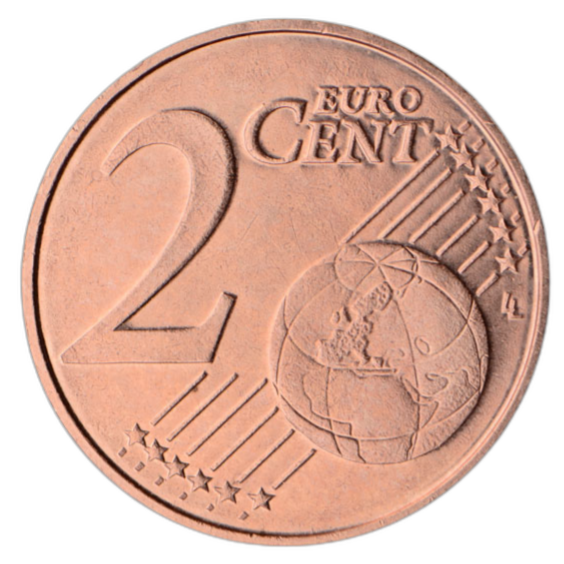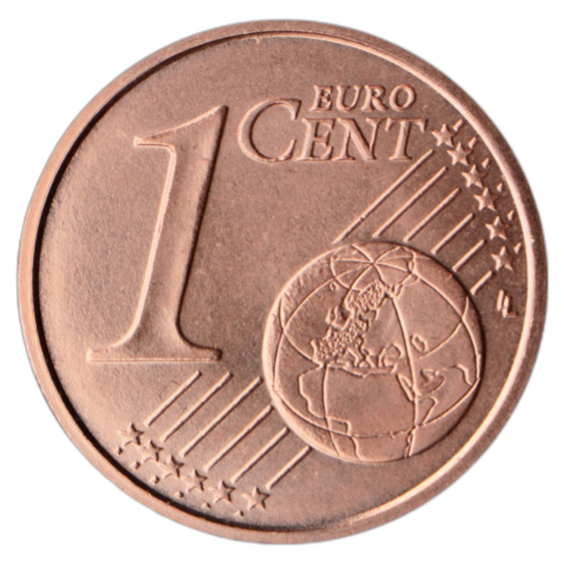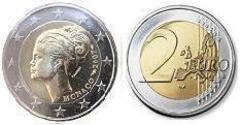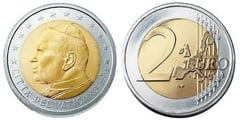Euro Coin Catalog by country
Since their introduction in 2002, euro coins have become a passion for collectors around the world. Each eurozone country issues its own coins with unique designs on the national side, which has resulted in a rich variety of pieces that blend art, history and culture. This phenomenon has prompted the creation of a catalog of euro coins by country, an indispensable tool for those wishing to collect euros or identify rare and valuable specimens.
Although the euro is a common coin in Europe, its coins tell different stories depending on the issuing country. From historical figures to national symbols, each design has its own identity, making each coin a small numismatic work of art.
In this guide you will discover all the euro coins classified by country, you will learn about their characteristics, years of issue, variants, errors and those pieces that can reach high prices among collectors. Whether you are a beginner or an expert, here you will find all the information you need to expand your collection.

All euro coins by country
Explore the euro coins issued by each country of the Eurozone. Select a country to see all its designs, years of issue and numismatic curiosities. A quick and easy way to access the complete catalog and locate the coins missing in your collection.
Search country with euro:
- Andorra149
- Austria245
- Belgium255
- Croatia136
- Cyprus100
- Estonia102
- Finland165
- France645
- Germany283
- Greece165
- Ireland73
- Italy275
- Latvia67
- Lithuania146
- Luxembourg120
- Malta102
- Monaco82
- Netherlands 195
- Portugal442
- San Marino319
- Slovakia82
- Slovenia83
- Spain1123
- Vatican359
Countries in the process of adopting the euro
Although most European Union countries are already part of the eurozone, some are still in the process of adopting the euro as their official coin. Here is the latest status of the candidates:
- Croatia: already part of the eurozone. Officially adopted the euro on January 1, 2023, becoming the 20th country to use the single coin.
- Bulgaria: Continues to work on the reforms needed to meet the convergence criteria. Although it initially planned to adopt the euro in 2025, the date has been postponed and a definitive timetable has not yet been established.
- Romania: It has expressed its intention to join the eurozone, but still faces economic and structural challenges. No specific date has been set for its accession.
Table of Contents
- Euro Coin Catalog
- Why are some euro coins so valuable?
- List of 2 euro commemorative coins
- Designs and types of euro coins
- When and why do we consider euro coins rare?
- The 7 most wanted 2 euro coins
- 2 euro coins with variants, faults and errors
- Counterfeit 2 euro coins (coins easy to confuse with euros)
- Metals of the euro coins What are they made of?
- Beyond everyday use: 10 euro, 20 euro, 30 euro, 40 euro and others.
- Where to sell valuable euro coins?
- Aspects that collectors take into account when making a purchase
- How to sell euro coins on Foronum
- Where to sell euro coins in Spain
- Don't have your euro coin collection on Foronum yet?
Why are some euro coins so valuable?
The value of certain euro coins is not only due to their face value, but to a combination of factors that make them highly coveted among collectors. These are the main reasons for their skyrocketing value:
- Rarity: the smaller the number of coins issued, the higher their value tends to be. Countries such as Monaco, San Marino or Vatican City, which mint in very limited quantities, have some of the most sought-after coins on the market.
- Minting errors: Coins with flaws such as incorrect dates, displaced designs or poorly engraved elements can fetch very high prices. These errors are not common, making them true gems for collectors.
- Commemorative issues: 2 euro commemorative coins, especially those celebrating historical figures or important events, are usually in high demand. Some special mintages are so limited that they sell out quickly, increasing in value over time.
- Condition: A coin in uncirculated (SC) condition or certified by highly rated numismatic entities can be worth much more than the same coin in poor condition.
- Market demand: The interest generated by a coin also directly influences its price. A piece may not be especially rare, but if it becomes popular for some reason (such as an ephemeris or a news item), its value can skyrocket.
Among the best known are the 2 euro Grace Kelly coin (Monaco 2007), which is one of the most expensive ever issued, or the special editions of San Marino and the Vatican, which combine low circulation and strong international demand.
If you want to discover which are the most valuable euro coins, we invite you to visit the following links:
List of 2 euro commemorative coins
Commemorative 2-euro coins are a special form of minting within the eurozone, designed to commemorate significant historical events or pay tribute to important figures. These coins are legal tender throughout the eurozone and share the same technical characteristics as regular 2 euro coins, including size, weight, and metal composition. The main difference lies in the design of the national side, which features a specific commemorative image rather than the standard design of the issuing country.
Each eurozone member country is entitled to issue up to two different commemorative designs per year, although some choose to issue fewer or none at all. In addition, there are occasional joint issues in which all eurozone countries mint coins with a common design to commemorate events of European significance. These coins are highly prized by collectors due to their limited mintage and historical or cultural value, although their face value remains at 2 euros and they can normally be used in everyday transactions in any eurozone country.
These coins are of the bimetallic type since they are made of two metals that are joined by means of a press. In the inner part we have the nickel part coated in nickel-brass and the outer part in cupro-nickel metal. They have a diameter of 25.75 mm, a thickness of 2.20 mm and a weight of 8.50 grams.
View ALL 2€ Commemorative Coins by year and by country
-
 2004
2004 -
 2005
2005 -
 2006
2006 -
 2007
2007 -
 2008
2008 -
 2009
2009 -
 2010
2010 -
 2011
2011 -
 2012
2012 -
 2013
2013 -
 2014
2014 -
 2015
2015 -
 2016
2016 -
 2017
2017 -
 2018
2018 -
 2019
2019 -
 2020
2020 -
 2021
2021 -
 2022
2022 -
 2023
2023 -
 2024
2024 -
 2025
2025 -
 2026
2026
Designs and types of euro coins
The euro coin series consists of eight coins of different denominations: 1, 2, 5, 10, 20 and 50 cents, 1€ and 2€.
The design of the coins incorporates a common face (design by Luc Luycx, Royal Belgian Mint) and a national face on the obverse indicating the issuing country. Given that there are so many countries that make up the euro, the large number of coins that exist opens a large window to the collecting of these coins.
As a curiosity, with the incorporation of the new countries, the common side has undergone modifications. The reverse of most euro coins only incorporated the countries that formed the European Union in 1997. After successive enlargements, in 2007 it was decided to implement a new design. It shows the entire European continent without borders, including Malta and Cyprus. They are known in the numismatic world as euros with the "new map".
What are the coins made of?
The coins are made of different alloys:
- 1 and 2 cents: copper-coated steel.
- 5, 10 and 20 cents: copper-plated steel (Nordic alloy)
- 50 cents, 1 and 2 euros: nickel-brass alloy
Sizes and weights
Each denomination has a specific size and weight:
- 1 cent: 16.25 mm, 2.30 g
- 2 centimos: 18.75 mm, 3.06 g
- 5 centimos: 21.25 mm, 3.92 g
- 10 cents: 19.75 mm, 4.10 g
- 20 cents: 22.25 mm, 5.74 g
- 50 cents: 24.25 mm, 7.80 g
- 1 euro: 23.25 mm, 7.50 g
- 2 euros: 25.75 mm, 8.50 g
The different euro coins incorporate electromagnetic and automatic reading features. They provide the guarantee of maximum security, since they are manufactured according to very advanced technical specifications. The objective is to make counterfeiting extremely difficult and facilitate detection.
Some countries have stopped producing some coins
The high cost of manufacturing and distribution of some coins, especially the smaller ones, led several countries such as the Netherlands, Finland and Belgium to stop using 1 and 2 cent coins. Being this type of coins the ones that have more followers when it comes to collecting them.

When and why do we consider euro coins rare?
Euro coins can be rare for a number of reasons. They are considered rare and valuable for several reasons that distinguish them from the rest of the common monetary circulation. The rarity of a coin may be determined by its low mintage, that is, the limited quantity in which it was minted. This is especially notable for coins issued by small countries such as Monaco, San Marino and Vatican City, which produce coins in much smaller volumes compared to other Eurozone countries.
Here are some of the factors that influence their rarity;
- Limited mintages: Some coins are minted in very small quantities, making them scarce from the outset.
- Commemorative issues: Coins minted to commemorate special events usually have limited mintages.
- Minting errors: Coins with manufacturing errors can be highly sought after by collectors.
- Small countries: Coins from countries with small populations such as Monaco or San Marino tend to be rarer.
- Unique designs: Some coins have special designs that make them more attractive to collectors.
- Age: The first euro issues (2002) of some countries may be more difficult to find.
- Design changes: If a country changes the design of its coins, earlier versions may become rare.

Monaco | 2 euro (Grace Kelly)
Vatican | 2 euro (John Paul II)
The 7 most wanted 2 euro coins
Each year, some designs stand out for their uniqueness and value, attracting the attention of collectors and enthusiasts around the world. From treaty celebrations and anniversaries to tributes to iconic figures and historical movements, these coins are not only symbols of European union, but also treasures coveted for their rarity and cultural significance.
Discover below the seven most sought-after 2 euro coins, whose designs and histories make them must-haves for any European numismatic collection.

2 euro coins with variants, faults and errors
As numismatic experts, we will explain to you that faults, variants and misprints on two-euro coins are highly appreciated by collectors due to their rarity and uniqueness. These terms refer to different types of anomalies in the minting of the coins:
- Flaws: These are significant errors in the minting process that affect the appearance or composition of the coin.
- Variants: These are minor differences in design or mintage that are not considered errors, but distinguish certain coins from the standard version.
- Printing errors: Imperfections in the printing process that result in an incorrect or incomplete image on the coin.
Most popular coins among collectors with these characteristics:
- Error Monaco 2 Euro coin 2007 (Grace Kelly): some of these coins have an error in the date, showing "1956" instead of "1929" (Grace Kelly's birth year). These coins with error are highly sought after and valuable.
- Variant Italy 2002 2 Euro coin: Some of these coins have the European Union stars rotated 180 degrees compared to the correct version.
- Belgium €2 coin 2006 (design error): On some coins, the map of Europe appears without the borders between countries, which is considered a design error.
- Slovenian 2 euro coin 2007 (edge variant): Some of these coins have a different edge lettering than the standard version.
- Germany €2 coin 2008 (minting error): On some coins, the letter "J" (Hamburg mint) appears smaller than normal.
These examples are particularly popular with collectors because of their rarity and interest. Errors and variants can significantly increase the value of a coin in the numismatic market.

Counterfeit 2 euro coins (coins easy to confuse with euros)
There are some coins that can easily be confused with the 2 euro coin. It is important to be aware of these details to avoid fraud. Here are some coins that could be confused and what to look out for:
Thai 10 baht coin
- Similar size and weight to 2 euros
- Similar ribbed edge
- Difference: Different design and Thai text.
1 Turkish lira coin
- Size and weight similar to 2 euros
- Similar edge
- Difference: Different design and text in Turkish
Mexican 20 peso coin
- Similar size, although slightly larger
- Similar ribbed edge
- Difference: Different design and text in Spanish
10 Argentine peso coin
- Similar size and weight
- Similar ribbed edge
- Difference: Different design and Spanish text
Polish 2 zloty coin (old version)
- Very similar size and weight
- Similar ribbed edge
- Difference: Different design and text in Polish
To avoid confusion, please note the following:
- Familiarize yourself with the official design of the 2 euro coin, including the national designs of the different eurozone countries.
- Always check the text on the coin. Euro coins will always have Latin alphabet text and the word "EURO" or the symbol "€".
- Look at the map of Europe on the reverse side of genuine euro coins.
- Check the weight and size. The 2 euro coin weighs 8.5 grams and has a diameter of 25.75 mm.
- Examine the edge. The 2 euro coins have a unique inscription on the edge, which varies according to the issuing country.
- If in doubt, use a magnet. Euro coins are slightly magnetic due to their nickel composition.
- If you suspect a coin is counterfeit, compare it to a known genuine coin.
Remember that the deliberate manufacture or use of counterfeit coins is illegal and can have serious legal consequences.
Metals of the euro coins What are they made of?
Euro coins are made of different materials depending on the face value of each coin.
The 1, 2 and 5 cent coins are made of copper plated steel. Copper is usually used in coins to prevent corrosion, although collectors know that it is one of the most delicate when it comes to leaving traces and ends up darkening or turning a greenish color with oxidation.
The 10, 20 and 50 cent coins are made of an alloy known as "Nordic gold" which is made of copper, aluminum, zinc and tin in specific proportions.
The 1 and 2 euro coins are bimetallic, that is, they are formed by two parts of different metals and not as a single alloy, acquiring a nice appearance with two colors. The one-euro coins have an alloy of copper and nickel inside. This is the same material found on the outside of the 2-euro coins, which contain nickel-brass alloys on opposite sides.
Bimetallic coins: What are they?
We call bimetallic coins those formed by two different metallic parts. If they had three parts, we would call them tri-metallic and so on. This is the format used in the 1 euro and 2 euro coins.
Bimetallic coins are usually the highest value coins that countries have in circulation because they have a higher manufacturing cost.
The first bimetallic coin issued worldwide was in Italy in 1985. The Rome mint issued the well-known 500 lire coin. In Spain, it was the Mexican peso that began to use this format.
Beyond everyday use: 10 euro, 20 euro, 30 euro, 40 euro and others.
Special euro coins, such as the 10, 20, 30 and 40 euro coins, are mintages that go beyond the common denominations used in daily circulation. These unique pieces have multiple purposes and characteristics that make them stand out in the numismatic world.
Manufacture and purpose
These coins are manufactured mainly for commemorative and collectible purposes. They are issued by the central banks of the euro zone countries to celebrate significant historical, cultural or sporting events, to pay tribute to outstanding personalities or to commemorate important anniversaries. Their production is limited and controlled, which increases their attractiveness to collectors and investors.
Value and collectibility
Although these coins have a face value (the value indicated on the coin), their real value is usually higher due to several factors:
- Precious materials: many are minted in silver or gold.
Where to sell valuable euro coins?
If you have euro coins that you think may be valuable, there are several places where you can sell them. Here are some options and tips to consider:
Where to sell valuable euro coins
- Specialized auction houses: They offer the possibility of higher prices, but usually charge commissions.
- Numismatic stores: These are a safe option, although they may offer lower prices than auctions.
- Online platforms: Sites like eBay or specialized numismatic portals like ours can be a good option to reach more buyers.
- Numismatic fairs and conventions: Excellent for networking and getting expert appraisals.
- Collectors groups and forums: Can be useful for direct sales to other enthusiasts.
What to keep in mind when selling valuable euro coins
- Authenticity: Make sure your coins are authentic. If in doubt, consult an expert.
- Condition: Value can vary significantly depending on the condition of the coin.
- Rarity: Research how rare your coins are. Limited issues or issues with errors tend to be more valuable.
- Professional appraisal: Consider getting a professional appraisal before selling.
- Market Price: Research current prices of similar coins for a benchmark.
- Transaction security: If selling online, be sure to use secure payment methods.
- Documentation: Keep any certificates or documentation that may increase the value of your coins.
ℹ Remember that the coin market can be complex. If you are unsure, it is always best to consult with a numismatic expert before making a major sale.
Aspects that collectors take into account when making a purchase
Purchasing coins for collection is a process that requires knowledge, patience and a keen eye for detail. Collectors combine these aspects to build meaningful and valuable collections, which not only represent a financial investment, but also a tangible testament to history and culture.
Coin collectors, also known as numismatists, consider several crucial aspects when acquiring new pieces for their collections. The rarity of a coin is undoubtedly one of the most important factors, as less common pieces tend to be more coveted and valuable. However, rarity alone does not determine the value of a coin.
The state of preservation is another fundamental element that collectors carefully evaluate. A coin in excellent condition, with crisp detail and no significant damage, can be worth considerably more than a similar coin in inferior condition. Collectors use standardized grading scales to determine the condition of coins, which directly influences their market value.
Authenticity is a constant concern in the numismatic world. Experienced collectors pay special attention to details that can indicate whether a coin is genuine or a counterfeit. This can include analyzing the metal composition, mint marks, and other distinguishing elements of each coinage.
Finally, price and budget are practical considerations that every collector should keep in mind. Balancing the desire to acquire valuable pieces with financial constraints is an art in itself. Astute collectors look for opportunities to acquire undervalued coins or negotiate favorable prices, always keeping in mind the authenticity and quality of the pieces.
How to sell euro coins on Foronum
Selling coins on Foronum is a very easy process and will allow you to show your pieces to the whole community to sell them. You just need to be registered and have a valid email account. Then from the control panel you can access the Buy / Sell. This link of How to sell in Foronum? will help you.
Where to sell euro coins in Spain
If you are looking to sell your euro coins in Spain, here are some specialized stores and platforms where you might consider doing so:
- Numisbilbao: Shop located in Bilbao specialized in buying and selling ancient and modern coins and banknotes.
- Monedalia: Online and physical store in Madrid specialized in numismatics, philately and collecting.
- Lamas Bolaño: Numismatics in Barcelona with extensive experience in buying and selling coins of all kinds.
Before selling your coins, be sure to research the value and demand for them. Some stores and platforms may offer free valuations or direct purchase services, while others operate under a consignment or auction model.
Don't have your euro coin collection on Foronum yet?
In case you don't know, Foronum has tools to manage your euro coin collection and contact thousands of collectors around the world. Do not hesitate and start registering your collection with us. It won't cost you anything and it's all advantages. Whether you have all your two euro coins or just a few in a drawer, try us!




